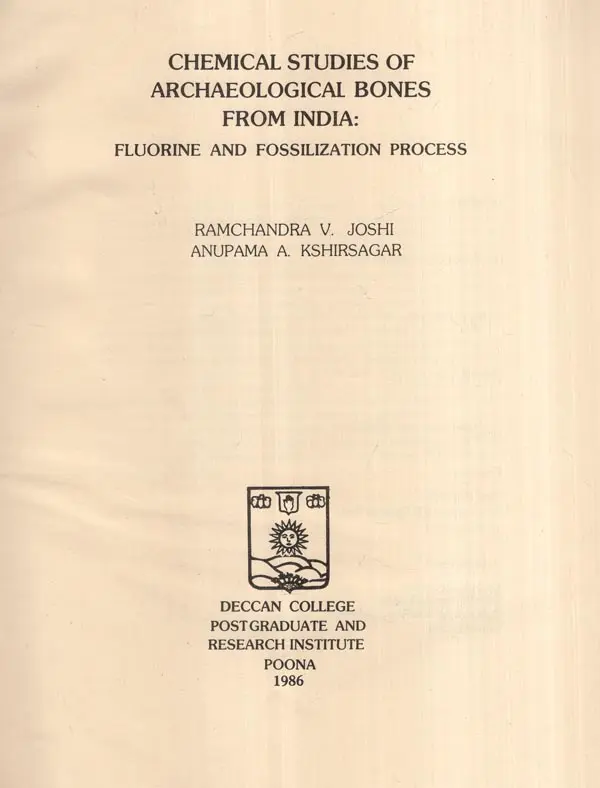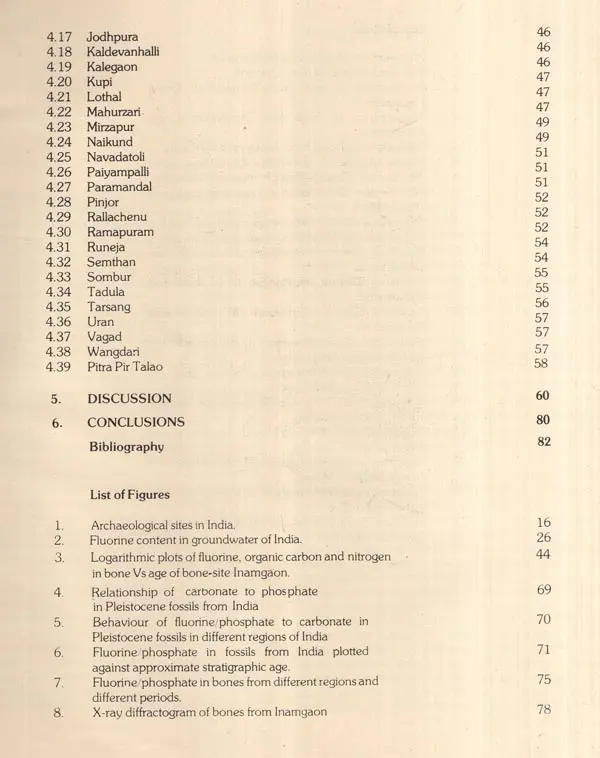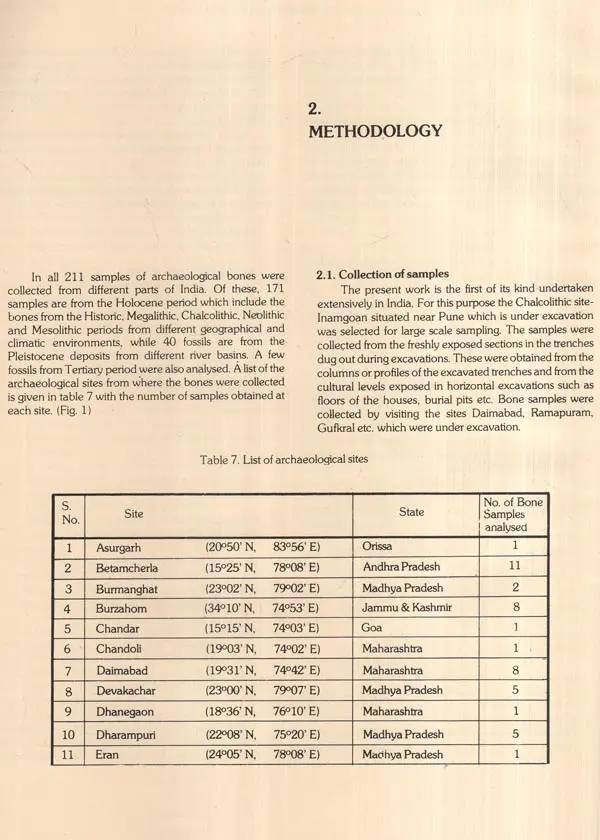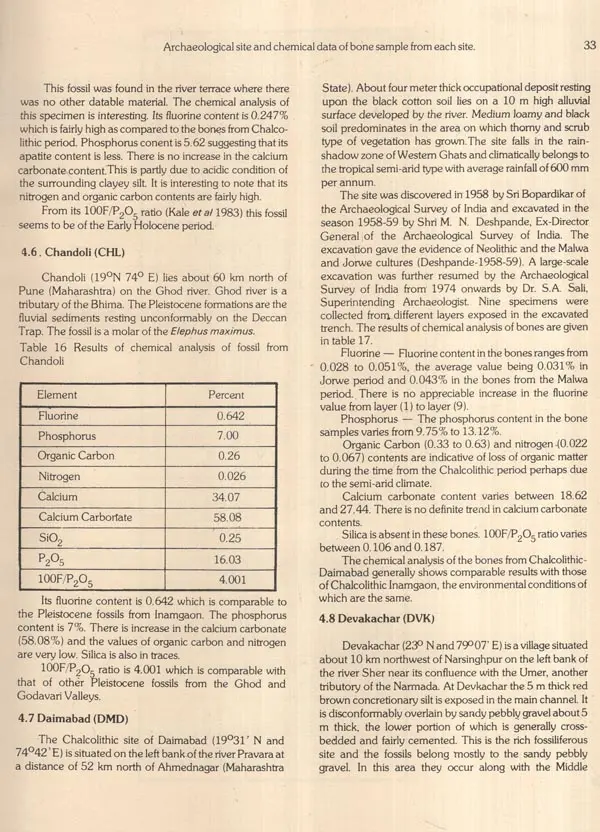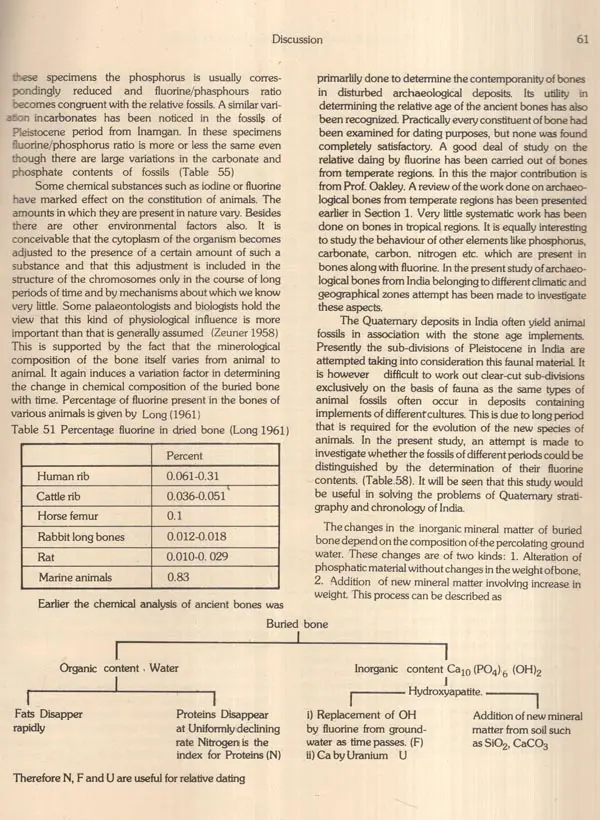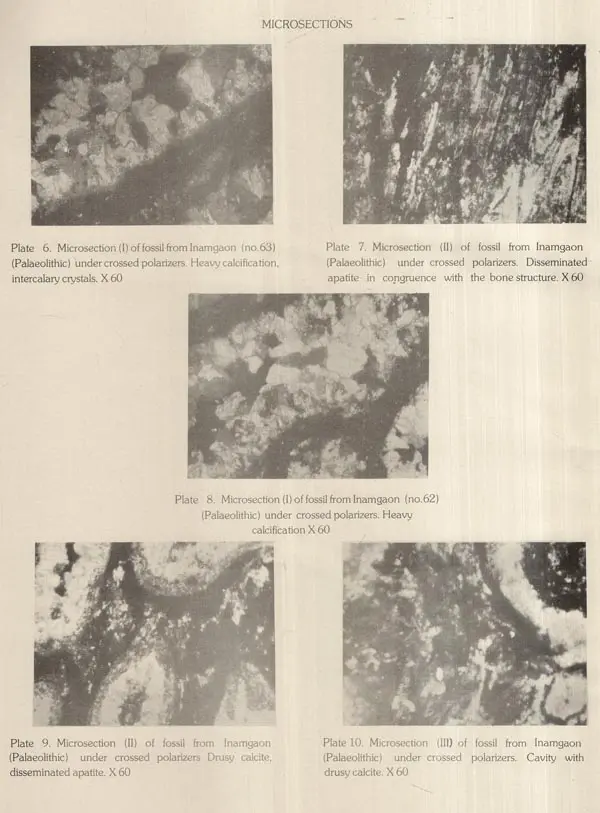Foreword Only recently in 1983 we published a monograph on the chemical analysis of archaeological habitational deposits (anthrosols) which was a contribution of our chemistry section. The present work on the chemical analyses of human and animal bones found associated with various archaeological deposits is a sort of extension of the previous experimental work. Such studies have been carried out extensively in Europe and elsewhere but little was yet known about the chemistry of ancient bones in India. It was also necessary to investigate the fossiization process under tropical or sub-tropical environments as in India. The chemistry section of the Dept. of Archaeology of this college has initiated this kind of investigation the results of which are presented in this small monograph. The contents of fluorine and other chemical elements have been determined of a fairly large number of samples obtained from different cultural periods and from the sites situated in different geographical setti- ngs from India. This work was carried out by Prof. RV. Joshi and Dr. (Smt.) A.A. Kshirsagar under the project financed by the University Grants Commission. There is considerable scope for such experiments which need to be carried out on a large scale so that they may also serve as useful aids in understanding palaeoenvironments and food habits of humans as also of contemporary animals of different achaeological periods, I congratulate both my colleagues in taking lead in this direction and I also thank the University Grants Commission, New Delhi, for the munificent grant sanctioned for this project.
Preface The chemical analysis of animal and human bones obtained in archaeological deposits throws considerable light on the degree of fossilization process at every stage and also the possible effect of environment onthis process. The fluorine content and sometimes even nitrogen content of the fossils are often used for the purpose of relative dating for establishing contemporanity or otherwise of bones occurring in the same archaeological deposit Prof. K.P. Oakley and several others have successfully employed the fluorine dating method in solving some intricate problems of archaeology. Most of these studies have been carried out on the fossils from temperate region. No systematic work of this type has yet been attempted on the fossils from India, which belongs to the tropical (monsoonal) type of environment.
Introduction The commonest feature of the archaeological record of a past human settlement is the variety of antiquities including pottery and human and animal bones. Bones however are more prone to decay and destruction than stone tools, pottery, metal and glass objects found in archaeological deposits. The skeletal remains are generally poorly preserved in ancient deposits. The degree of preservation of bone in natural environment after death of an animal depends upon the time and environment. So, if the ecological settings of two different places are more or less similar, the chemical and physical changes in bones at such localities can be used as an index for fixing the relative age of the bones.
Book's Contents and Sample Pages
